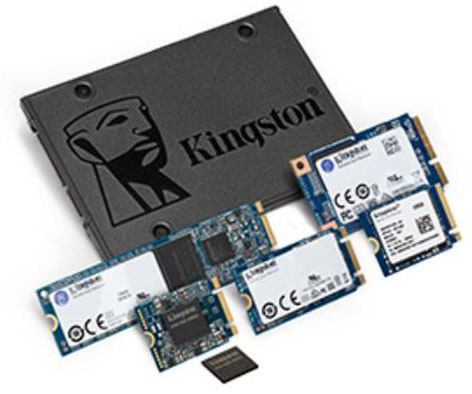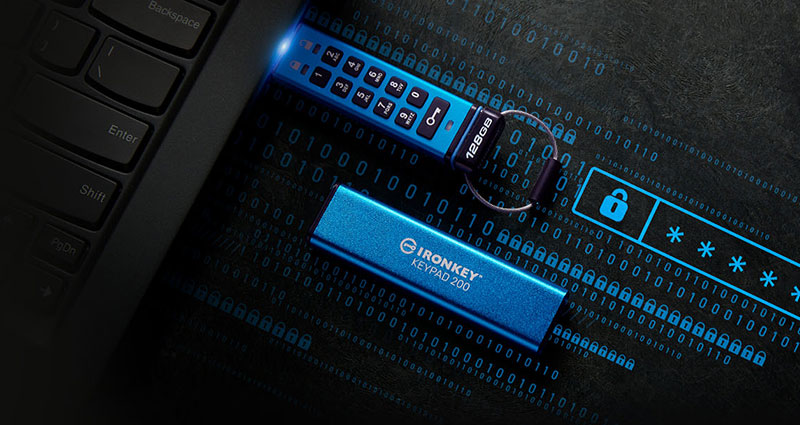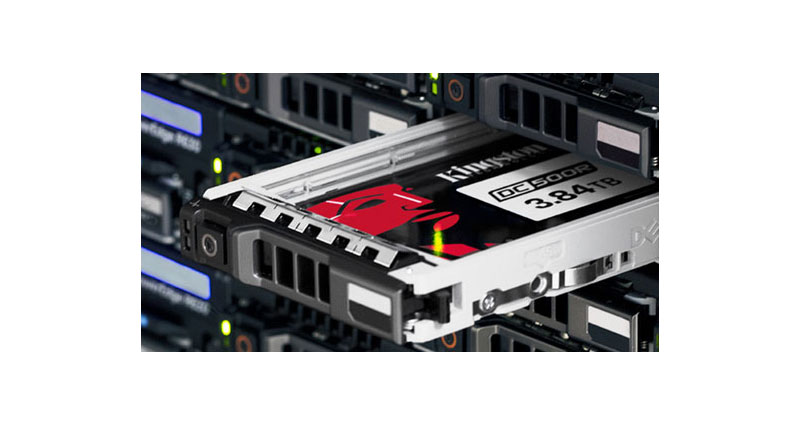Kingston Expands its Design-In SSD Line with Next Generation Flash Memory Technology
Kingston’s latest generation of Design-In SSDs features 112-layer and 176-layer stacked 3D TLC and QLC Flash architecture. This latest Flash technology enables higher capacity SSDs as well as improved performance over the previous 96-layer technology without sacrificing reliability or endurance. Kingston’s Design-In SSDs use Flash Memory designed to meet the longevity needs of a broad range of application workloads. SSD Endurance is a critical factor in purpose-built systems applications due to the long service life of these types of systems. High-layer stacked Flash Memory also has a cost advantage as it enables larger capacity SSDs to be built while still meeting customer cost expectations.
 (Image source: Kingston)
(Image source: Kingston)
As Flash generations have evolved over the past several years, there has been a misconception that for NAND Flash die to shrink, a user has to give up endurance and reliability in an SSD. This line of thinking is both true and false. Let’s look back at where SSDs started and what we have learned along the way, and hopefully remove any concerns about using current generation SSDs in computing applications.
When the idea of using SSDs in place of hard drives was first introduced, the biggest fear amongst users was the fact that SSDs wear out over time due to the way flash is programmed at the cellular level. The fear was “if I write too much to my SSD, it will fail, and I will lose all my data”. This would later become an unfounded fear. There were also early reports throughout the computer industry that SSDs tended to “brick”, meaning the drive failed and was no longer recoverable. In some of these cases, the result of a “bricked” SSD meant data loss. This problem was quickly resolved, however, with improvements in SSD firmware.
Kingston recognized early on that it was important to educate customers on SSD wear and reliability and assure them their data was safe. Kingston launched a 2-year education campaign, traveling around the world and talking to their customers about SSDs. This education campaign proved to be very successful as the adoption of SSDs in client-based systems moved quickly in the following years.
The first mainstream Flash-based SSDs were built using SLC (Single Level Cell) and MLC (Multi Level Cell) Flash technology. At the time, SLC had a program/erase cycle rating of 100k cycles, and MLC had a program/erase cycle rating of 5k cycles. SLC Flash was designated primarily for SSDs used in enterprise servers due to its high endurance rating, and MLC was primarily designated for use in client notebooks and desktop PCs.
After SSD manufacturers shipped millions of SSDs and gained insight into user workloads, SSD wear became better understood and it was determined that the early generation SSDs built with SLC and MLC Flash were delivering endurance far beyond what was necessary for both application segments. For example, client SSDs using MLC Flash for typical office applications and web browsing were determined would operate reliably beyond 20 years, far outlasting the useful life of the computer the SSD was installed in. The same analyses were performed for enterprise SSDs used in mainstream servers. While a server workload differs greatly from a client workload, the extra endurance provided by SLC Flash created the same long useful life scenario where the enterprise SSD would far outlast the useful life of the server. This caused the SSD industry to reevaluate the type of Flash used in both client and enterprise SSDs.
Cost vs. Endurance
The Flash Memory on an SSD makes up 80% of the bill of material cost of an SSD, and higher endurance Flash costs more than lower endurance Flash. Therefore SSD manufacturers like Kingston began focusing on designing SSDs for the applications the drives would be used in and not adding cost where it wasn’t necessary. This design strategy has a great cost benefit to the end user because the user isn’t paying for endurance they will never use.
Another aspect of SSD reliability is the advancements in SSD controller technology. All SSDs are equipped with a sophisticated Flash Controller that manages reads and writes to the SSD, wear-leveling, and error correction. Flash controllers use proprietary firmware specifically created for a particular Flash Memory type. This means that the firmware code is optimized specifically for a particular Flash type providing increased Flash management and ultimately a more reliable SSD.
Today both SLC and MLC SSDs are only available from a limited number of SSD suppliers that target niche applications, and these SSDs carry a very high price premium. For mainstream laptops, desktops, and servers SSD manufacturers like Kingston are using TLC (Triple Level Cell) and QLC (Quad Level Cell) Flash on their latest generation SSDs. TLC and QLC-based SSDs today provide the best balance of endurance, reliability, and cost to the end customer for client and enterprise applications. Users today have the unique ability to select from a menu of SSDs that will meet the performance and endurance range they are seeking at the lowest price point in SSD history.
A Deeper Look into TLC and QLC Flash
TLC flash (triple-level cell flash) is a type of NAND flash memory that stores three bits of data per cell. TLC Flash is the most widely used Flash for SSDs today for both client and enterprise applications. TLC SSDs are great for a wide variety of workloads where the reading and writing to the SSD are relatively equal. This type of workload is common in consumer PCs, client/office PCs, and even most mainstream server workloads. QLC stands for quad-level cell. With this kind of flash memory, four bits of data are stored per cell. QLC SSDs typically provide lower endurance than TLC SSD but at a lower price point. QLC SSDs are great for higher-capacity SSDs that are used in more read-centric applications. These would be applications that write data infrequently and read frequently or infrequently. What makes QLC SSDs attractive is their low price point. QLC SSDs can significantly lower overall system costs as QLC SSDs are typically 10% lower in cost than TLC SSDs.
The Move to Higher-Capacity SSDs
Like the hard drive industry, the lowest capacity SSDs keep getting bigger every couple of years as Flash memory technology evolves. Users are also demanding larger capacity SSDs to store and capture more data in their applications. Both TLC and QLC-based SSDs today are generally considered “inexpensive” so users are buying-up when it comes time to make an SSD purchase. For some purpose-built computer applications where system longevity is important this higher capacity SSD limit can have an endurance benefit. SSDs can be configured by the user for increased endurance by simply partitioning the SSD with a large spare area. The SSD industry calls this “overprovisioning”. This allows the SSD controller to use the spare area for retired blocks and more efficient wear leveling.
Additional Reliability Features Built into Kingston SSDs
- Kingston Design-In SSDs include a wide variety of critical reliability features for purpose-built applications.
- Thermal Throttling - Kingston SSDs include a thermal throttling mechanism in the firmware that will reduce the performance of the SSD if it begins to reach its maximum operating temperature. This safeguards the drive from failing and more importantly protects user data from being lost.
- Durability – Kingston SSDs are more durable than spinning hard drives as they have no moving parts to wear out or break prematurely. This makes SSDs ideal for mobile vehicle applications and systems that are transported frequently from location to location. SSDs are ideal for high shock and vibration environments.
- Protection against sudden power loss – Kingston Design-In SSDs incorporate firmware features to safeguard against unexpected power loss. Sudden power loss is sometimes an unavoidable condition in some environments and SSDs need to have built-in protection to ensure the drive can properly recover on its next power cycle. Sudden power loss testing is a key part of Kingston’s qualification process for all the SSDs that it produces.
- 100% SSD Testing – Kingston tests 100% of the SSDs that come off the manufacturing line. Kingston has invested billions of dollars in test equipment to ensure the highest level of quality and low failure rate.

Have questions or comments? Continue the conversation on TechForum, DigiKey's online community and technical resource.
Visit TechForum











